Every four years, 32 teams gather in a host country to play 64 games of passionate football, watched by the entire civilized world, and most of the rest too. It’s the FIFA World Cup. It’s big. The 2006 final match in Germany was watched live by an estimated 715 million people. Each one of them saw an instant replay of Zidane heatbutting Materazzi. That’s the power of television.
Four years later, South Africa is hosting the 2010 World Cup. The first match will be played on June 11th at Johannesburg’s 95,000-seat Soccer City Stadium. The rest of the tournament will be split between 9 South African cities. Five of these have built a brand new venue for the occasion, led by Durban and its impressive 70,000-seat stadium which features a cable car to the top of a 106-meter high arch suspended over the field. The arch was given double legs on one end that join into a single footing at the other, symbolizing the country’s new unity.
Second on the list of major accomplishments is Cape Town’s new stadium, having been built on the site of the old Green Point Stadium. It will seat 68,000 spectators for the 8 games to be played there during the Cup. It features a 9000-panel glass roof to allow sunlight in, a semi-transparent facade and, last but not least, 500 toilets and 360 urinals…
Last Saturday, February 6th, a first rugby match and second game ever was played at the stadium. Organizers, working in stages, had raised the attendance limit to 40,000 people. They just about filled the place. We were there.
For most spectators, us included thanks to Marie’s dad whom we joined for the outing, this game opposing the Stormers to Boland was basically just an excuse to go visit the venue. The event was a trial, a test run at 2/3 capacity aiming to assess the readiness of the city and the stadium’s functionality in large crowds. It would seem, to my lasting surprise, that they both passed the test with flying colours.
Apart from the yearly Cape Argus bicycle race that rallies 35,000 participants, Cape Town isn’t used to big crowds. The Green Point stadium merely held 18,000 rugby fans. There isn’t much parking available downtown. Until now, there was no need for it. So rather than build massive 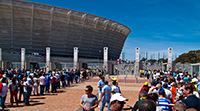 amounts of parking space around the new stadium, planners decided to spread the load and make visitors park further out. They would then ride buses to the game.
amounts of parking space around the new stadium, planners decided to spread the load and make visitors park further out. They would then ride buses to the game.
If that theory had been explained to me in detail before testing it, I would have laughed and prepared for the worst. There was no way to carry that many people back and forth in a timely manner. Chaos would surely ensue. Fights would erupt. We would miss the game.
I would have been wrong.
We parked underground at the Artscape Theater. When we emerged from the lot, a light crowd was flowing to the left and we simply followed. Many buses were parked nearby. They were requisitioned from the Golden Arrow fleet that normally mostly services the townships. Drivers sit in an armored booth but the buses are squeaky clean. We lined up behind some two or three hundred people, curious to see how this was going to unfold. A lot of staff was on hand, 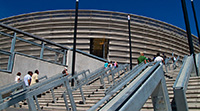 wearing fluorescent vests and holding various helpful signs: Queue Here, Standing Passengers Allowed, etc. But were they volunteers?
wearing fluorescent vests and holding various helpful signs: Queue Here, Standing Passengers Allowed, etc. But were they volunteers?
In less than 5 minutes, we were aboard our bus. It had gone so fast we could barely believe it. The bus took off along with 4 others – they were sending off waves of 5 buses every 5 or 6 minutes. More buses were arriving behind us empty and waiting their turn.
The drive to Green Point took some 10 minutes. Traffic lights were being controlled locally by the police who waved the buses through. At our destination, we followed the crowd once again and walked a half a kilometer to the stadium which finally appeared in all its glory from behind some low buildings. I had only seen it from Table Mountain. It is quite impressive. The security and police presence was even more impressive.
The only slow-down of the day happened at the gates where people initially queued up in an orderly fashion but eventually started jumping lines. The process was slowed down by a brief security check of each admitted spectator and a pat down that, 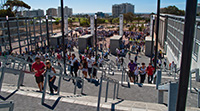 given the huge relative cost of the stadium, might have been much more efficient if fancy metal detectors had been on hand – even though they were probably searching for booze as much as weapons.
given the huge relative cost of the stadium, might have been much more efficient if fancy metal detectors had been on hand – even though they were probably searching for booze as much as weapons.
We then had to look for the green section, the stadium being divided in 6 color zones. Panels or maps would have helped greatly. But they might be on their way, as some details still seem to be a work in progress. The stadium’s periphery is superbly wide and aerated. Even with a 40,000 attendance, the crowd never became unbearable.
We found our seats and sat down with friends of Marie’s dad. I immediately jumped on my G10 and began taking hand-held panoramic shots of the inner stadium. The public was thrilled, not so much by the perspective of the game than by the grandiose new toy the city had finally given them. They momentarily forgot that their tax money would be paying for this long after the Cup had left for different shores and a gigantic wave 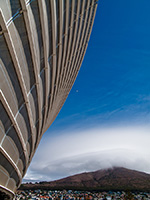 began to circle the stadium.
began to circle the stadium.
Soon the match began. Being French and having been raised playing football, I had a little trouble accepting the facts that a rugby ball is voluntarily deformed and that one player’s hands on said ball carried across the final line is a heroic act rather than the sacrilege I am used to, but in the end, I came to the conclusion that hundreds of years of divergent evolution must have created such drastic differences in the way people chase balls for the utter glory of it.
The sun shone straight down on us for most of the game and while I was blessed to have brought a baseball hat out of sheer confusion about the event, we were not so fortunate as to have thought of sun screen, and we watched the game with our 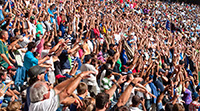 sweaters over our heads in a typically African shade seeking ritual.
sweaters over our heads in a typically African shade seeking ritual.
In a stroke of genius, Henri decided we should leave a bit early to beat the final exodus back to our car. The game was going along well and our favourite local team was beating the boerewors out of their visitors. They would eventually win 47-13.
We headed for the exit, surprised to see many others had had the same idea. Boarding the bus back didn’t take much longer than it previously had, but by the time we were rolling towards the city center, a huge line had formed behind us and people on the bus were whistling incredulously at the human snake that now stretched 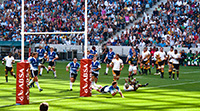 back all the way to the stadium gates.
back all the way to the stadium gates.
We counted the buses on site, plus the ones arriving behind them, and all the empty ones we saw on our way to the drop-off point. Best guess, 50+. It was all quite impressive. We got to our car, drove off, and looked at each other. The whole thing had been mostly glitch-less. In and out without a scratch. The new Cape Town Stadium was holding its own and it appeared it would handle a 70,000-people game without flinching too much.
And that would be really nice. Cape Town needs the good publicity. South Africa needs the good publicity. After the country woke up from its terrible nightmare last century, it was slowly rehabilitated into the world scene, reappearing shyly on maps while embargoes were lifted; tourism slowly came about and the past was painfully shoved under 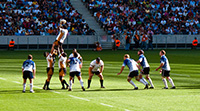 the dirty carpet of History.
the dirty carpet of History.
But it seems to me the country has since then been struggling inwardly with its own new identity and never managed to achieve total recognition. Crime remains incredibly high and social issues are as pressing as ever. The shadow hasn’t yet passed. To brighten things up, attention from the outside could probably do a lot of good. The touristic and economic boosts a worldwide event such as the FIFA World Cup can yield are incredibly powerful. But this is a double-edged sword, one that can make or brake a country’s reputation.
While it is one thing to hold the Cup in an accessible, high-tech and popular country like Germany, it is quite another to hold it at the southern end of 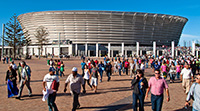 Africa, far from just about everywhere in the world, in a country that in most people’s mind still carries the stigma of Apartheid, that is kept on the watch/warning list of many foreign offices and who’s white minority mostly ignores football for rugby.
Africa, far from just about everywhere in the world, in a country that in most people’s mind still carries the stigma of Apartheid, that is kept on the watch/warning list of many foreign offices and who’s white minority mostly ignores football for rugby.
The South African 2010 FIFA World Cup, to me, is a major gamble. I hope it’ll work. Everybody here deserves it.
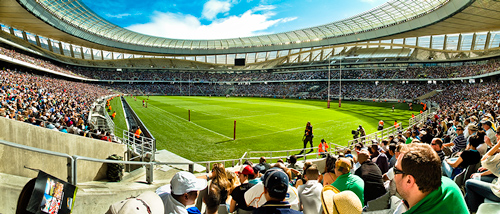
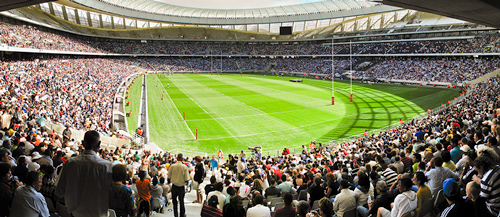
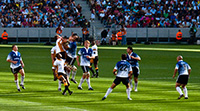
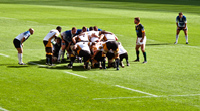
Comments
dinahmow
marie
Vince